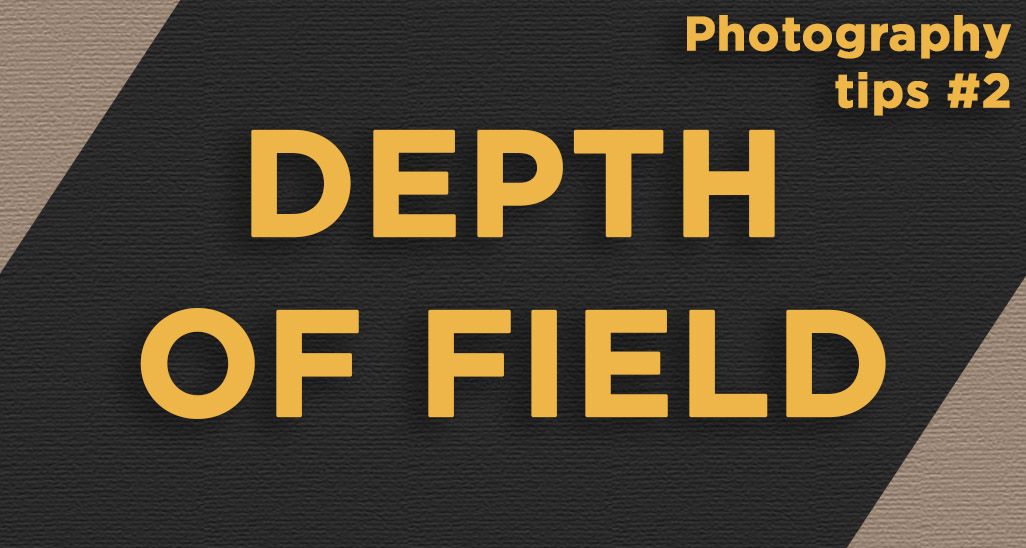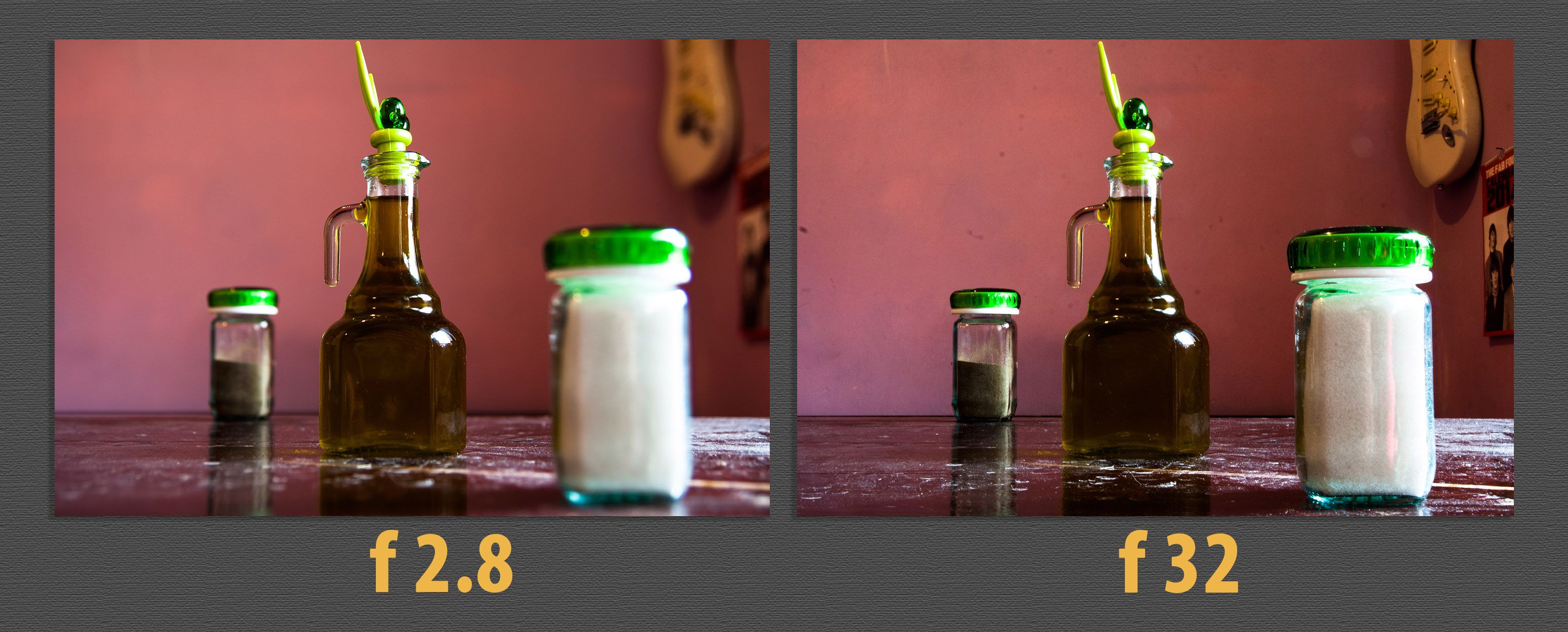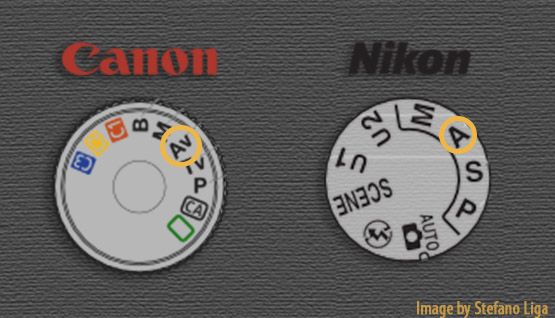<div class="text-justify">
<div class="pull-left">
*Tutte le immagini sono create dall'autore*
</div>
<div class="pull-right">
*All the images are created by the author*
</div>

<div class="pull-left">
# La profondità di campo
Oggi ti parlerò di un argomento **fondamentale** in fotografia: la **profondità di campo**. Spesso questo concetto è affrontato in maniera superficiale, con questo articolo spero di riuscire a darti un quadro *"quasi completo"* e di darti anche uno spunto per sperimentare!
### Cos'è la profondità di campo
La profondità di campo è lo spazio entro il quale gli oggetti risultano **messi a fuoco**.
</div>
<div class="pull-right">
# The depth of field
Today i want to talk you about a **fundemental subject** in photography: the **depth of field**. This topic is often treated with superficiality and with this post i hope giving you a more detailed information about that and maybe you could also have new **photography experiences!**
### What is the shalllow depth of field?
The depth of field is the area in which the object are **focused.**
</div>

<div class="pull-left">
Tieni a mente che quando mettiamo a fuoco un soggetto la profondità di campo non è distribuita simmetricamente rispetto al soggetto, in particolare essa è distribuita **per un terzo davanti** al soggetto e **per due terzi** dietro. Mi spiego meglio...
Supponiamo di stare fotografando un soggetto e di avere una **profondità di campo di 6 metri**: mettendo a fuoco il soggetto avremo 6 metri "di spazio" messo a fuoco, **2 metri davanti** al soggetto (tra il soggetto e la fotocamera) e **4 metri dietro** (tra il soggetto e lo sfondo).
### Come utilizzare la profondità di campo
L'occhio tende a concentrarsi per natura solo sulle zone nitide, messe a fuoco, quindi il principio su cui basarsi per utilizzare correttamente la profondità di campo sta nel chiedersi *"qual è il soggetto della fotografia?"*. Se sto fotografando **un paesaggio** è ovvio che il soggetto è il paesaggio stesso e quindi tutto dovrà risultare **completamente messo a fuoco**, dall'albero più vicino alla montagna più lontana. Al contrario **per un ritratto** non è necessario che lo sfondo sia nitido e anzi distrarrebbe l'occhio dal soggetto. Esistono poi situazioni in cui sei tu a dover scegliere se mettere a fuoco solo una parte o tutta la scena.
### Parametri che influenzano la Profondità di campo
La profondità di campo varia al variare **di tre parametri:**
• *Apertura del diaframma*
• *Distanza soggetto*
• *Lunghezza focale*
Prima di capire come questi influiscono sulla PDC devo spiegarti qualcosina, tranquillo sarò breve…
### Circolo di confusione
Immagina un oggetto come **un insieme di punti**, ognuno dei quali riflette luce. **I raggi di luce** provenienti da uno di questi punti, dopo aver attraversato l'obiettivo, **si ricongiungono** in prossimità del sensore riproducendo su di esso **lo stesso punto**.
</div>
<div class="pull-right">
Remember that when we focused an object the depth of field **isn’t arranged simmetrically** with respect to the object, buti t is arranged for **one third** between the photographer and the object and **for two third** behind the object: if we are photographing an object and we have a **6 meters depth of field**, we’ll have **2 meters** of focused area between the object and the photographer and **4 meters** behind the object.
### How to use the depth of field
The human eyes **focus on the clear zone** of the photography, so when you are taking a photo you have to asking yourself *“what’s the subject of this photography?”*. If you are photographing **a landscape** the subject is the landscape, so you have to **focused all the things** you watch through the camera, from the closest tree to the farthest mountain. On the other hand, **for a portrait** the background don’t need to be focused and indeed it would be better if **the background was out of focus**. There are also situation in which you have to choose if focused on object or another.
### Elements that influence the depth of field
The three elements that influence the depth of field are:
• *Aperture of the lens*
• *Distance Object-camera*
• *Focal lenght*
Before talking about these parameters i have to briefly explain one thing…
### Circle of confusion
Imagine an object **as a gruop of points,** everyone reflecting light. The **rays of light** reflected by one of them, after crossing the lens, **rejoin on the sensor** reproducing the point in it.
</div>

<div class="pull-left">
La nitidezza di un oggetto dipende proprio dalla **fedeltà di riproduzione** del punto nel sensore.
Quando un oggetto è sfocato? I punti sfocati sono quelli i cui raggi di luce, in prossimità del sensore, **non si incontrano perfettamente** nello stesso punto.
</div>
<div class="pull-right">
The clear of an object in the photo depends on the **reproduction fidelity** of the points on the sensor.
When an object results out of focus?
The out of focus points are the ones whose the rays of light **don’t rejoin perfectly** on the sensor.
</div>

<div class="pull-left">
come vedi un oggetto che nella realtà è puntiforme ha dato luogo **ad un cerchio**, più grande. Quest'ultimo è detto ***circolo di confusione*** e all'aumentare delle sue dimensione aumenta il grado di sfocatura. Per far si che un oggetto risulti nitido ai nostri occhi **il diametro** del circolo di confusione deve essere **minore di circa 0.3 millimetri.**
### Apertura del diaframma e PDC
Il parametro principale su cui agire per modificare la profondità di campo è **l'apertura del diaframma**, questo perché gli altri due fattori sono spesso obbligati o hanno un range di variazione minore.
Ti ricordo che l'apertura del diaframma è indicata da una ***“f”*** e da un numero, per esempio ***f 2.8***, e che **più piccolo è il numero più aperto è il diaframma**.
</div>
<div class="pull-right">
As you see in the image, the point create **a circle on the sensor**. The circle is named ***“Circle of confusion”*** and the bigger the circle, the more out of focused will be the point on the photo.
For having a clear abject the circle must have a **diameter of less than 0.3 mm**.
### Lens aperture and depth of field
The **main parameter** that influence the depth of field is the **lens aperture**, it is also the parameter with the greatest variation range.
Remember that the lens aperture is indicated with an ***“f”*** and a number, for example ***“f 2.8”***, and the smaller the number, the more open is the lens.
</div>

<div class="pull-left">
La regola generale è: **a un diaframma più aperto corrisponde una profondità di campo minore**: lo spazio entro cui gli oggetti risultano messi a fuoco diminuisce. Analogamente un diaframma molto chiuso aumenterà la PDC.
</div>
<div class="pull-right">
**The general rule** is this: **the bigger the aperture, the smaller the depth of field**, in other words the bigger the aperture, the smaller is the area in which the abject are focused. Then, on the contrary, **the smaller the aperture of the lens, the bigger the depth of field**.
</div>

<div class="pull-left">
Come vedi con un diaframma più aperto basta una piccola variazione della distanza per avere punti sfocati cioè è più facile ottenere **circoli di confusione più ampi**.
</div>
<div class="pull-right">
As you see in the image, with a bigger aperture even a little variation on the distance produces more out of focus points (bigger circles of confusion).
</div>

<div class="pull-left">
### Distanza dal soggetto e PDC
**All'aumentare della distanza del soggetto dall'obiettivo aumenta la profondità di campo**. Questo perché gli oggetti lontani tendono a proiettare raggi di luce, verso l'obiettivo, con **angoli più piccoli**.
</div>
<div class="pull-right">
### Distance from the object and depth of field
**The bigger the distance object-camera, the bigger the depth of field**. This happens cause the farther objects project rays of light with a **smaller angle**.
</div>

<div class="pull-left">
Come abbiamo detto con angoli più piccoli (distanze maggiori) è più facile che i raggi di luce si incontrino nello stesso punto del sensore ed è quindi più difficile *"sgarrare"*.
### Lunghezza focale e PDC
**All'aumentare della lunghezza focale diminuisce la profondità di campo**. Se ci fai caso infatti quando vedi foto fatte con le ormai tanto di moda *action cam*, che hanno **lunghezze focali molto ridotte** (obiettivi *fish eye*) ti accorgi come **tutto sia messo a fuoco**.
### Distanza iperfocale
**La distanza iperfocale** è la distanza oltre la quale **tutto è messo a fuoco**, la profondità di campo può infatti estendersi **anche all'infinito**, dipende dalla combinazione dei parametri di cui abbiamo parlato sopra.
### Priorità di diaframma
Il modo migliore per controllare la profondità di campo durante una sessione di scatti è quello di scattare in modalità *priorità di diaframma*. Per impostare la macchina fotografica in priorità di diaframma poni la ghiera in ***A*** se hai una Nikon e in ***Av*** se hai una Canon.
</div>
<div class="pull-right">
With **smaller angles** (bigger distances) is easier that the rays of light rejoin them (with more precision) on the sensor.
### Focal leght and depth of field
**The bigger the focal lenght the smaller the depth of field**. If you take a look at the *action cam* photos you can see that **all the objects on the photo are focused**, indeed the *action cam* have a very smaller focal leght (*fish eye* lens).
### Hyperfocal distance
The **hyperfocal distance** is the distance beyond which **all the objects are focused**, the depth of field can indeed extend **infinitely**, depends on the combination of the three parameters that influence it.
### Aperture priority
The best way to control the depth of field during a photographic session is to take the photo in ***aperture priority***. To set the camera in aperture priority put the modality in ***A*** if you have a Nikon and in ***Av*** if you have a Canon.
</div>
<center>

</center>
<div class="pull-left">
Come funziona? Semplice: tu scegli l'apertura del diaframma e questa rimane costante, la fotocamera agirà allora automaticamente su ***ISO*** e ***tempo di esposizione*** per adattarsi ai diversi livelli di illuminazione.
### Per concludere
Abbiamo detto che la profondità di campo:
• *Diminuisce con l'apertura del diaframma*
• *Diminuisce con la lunghezza focale*
• *Diminuisce con la vicinanza del soggetto rispetto all'obiettivo*
Abbiamo inoltre fatto l'esempio classico del paesaggio che necessita di una profondità di campo elevata e del ritratto che invece necessita che le attenzioni siano convogliate nel viso e quindi una PDC ridotta (ti consiglio a riguardo di guardare i [ritratti di Steve McCurry](https://www.google.it/search?q=steve+mccurry+portraits&source=lnms&tbm=isch&sa=X&ved=0ahUKEwid76unmPLVAhVGuRQKHdHFBzwQ_AUICigB&biw=1366&bih=589)).
Concludo col dirti che la fotografia non è fatta di paesaggi al tramonto e di volti, la quantità e la tipologia di soggetti con cui ti ritroverai a fotografare è infinita e non sempre esiste una profondità di campo *"corretta"*.
A proposito di paesaggi al tramonto, ecco cosa ne pensa la fotografa di personaggi ambigui [Catherine Opie](https://en.wikipedia.org/wiki/Catherine_Opie): *“The biggest cliche in photography is sunrise and sunset”*.
Se ti è piaciuto il post, mi raccomando **lascia un upvote e fai resteem!**
</div>
<div class="pull-right">
How do it work? Its very simple: you choose the aperture of the lens and it remains constant, the camera will set the other parameters (*ISO* and *shutter time*) based on the light condition of the scene you are going to photograph.
### Conclusion
the most important things you have to remember are:
• *The bigger the lens aperture, the smaller the depth of field*
• *The bigger the focal lenght, the smaller the depth of field*
• *The closer the object, the smaller the depth of field*
We did the example of the landscape and we said that in this case you must have a large depth of field, on the other hand the portraits need a small depth of field ( you can take a look to the [portraits of Steve McCurry](https://www.google.it/search?q=steve+mccurry+portraits&source=lnms&tbm=isch&sa=X&ved=0ahUKEwjdiIrlmPLVAhXBPRQKHRy7BKwQ_AUICigB&biw=1366&bih=589) )
At the end i want to tell you that the photography is not only landscapes and portraits, there are a lot of different situation you can find during your photography session and there isn’t the correct depth of field for every situation.
About landscapes and sunset, this is the [Catherine Opie](https://en.wikipedia.org/wiki/Catherine_Opie)’s thinking: “The biggest cliche in photography is sunsrise and sunset”.
If you liked this post, **upvote and resteem!**
</div>
</div>